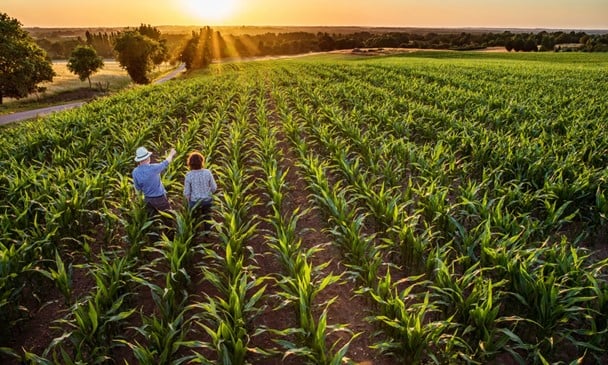June is National Dairy Month, so we collected some fun facts in a snapshot of the Minnesota dairy industry for you to appreciate and share. Because the world needs to know just how critical dairy and our wonderful farmers are to our economy.
Minnesota may not boast the dairy reputation that Wisconsin enjoys. But as a dairy state, we hold our own. We rank seventh in the U.S. for dairy production, surpassing Pennsylvania, the former seventh place holder. Minnesota is also the sixth largest cheese producer in the U.S., putting 811 million pounds of it into the food supply in 2023.1 (That’s a lot of cheddar and pizza topping!)
Which Minnesota counties are the dairy-est?
Minnesota is home to 455,000 milk cows, and more than half of them can be found in one of these 10 counties. Is your county among the leaders in dairy? Here’s a look at the top cow population centers as of January 20232:
- Stearns 66,000
- Morrison 27,500
- Winona 24,000
- Wabasha 20,000
- Goodhue 18,300
- Otter Tail 14,300
- Kandiyohi 14,200
- Todd 14,400
- Swift 12,400
- Nicollet 11,500
How many dairy operations does Minnesota have?
Minnesota dairy is facing its share of challenges, with a growing number of farmers getting out of the business. The year 2022 saw a net loss of 175 dairy operations, bringing the count below the 2,000 mark at 1,996.3 Over the past decade, the number of dairy operations has fallen by half.
Yet, there’s no corresponding downswing in milk production. In 2022, Minnesota milk production was 10.4 billion pounds of milk, valued at $2.6 billion.4
What’s the story behind these trends?
There are a number of reasons why farmers are leaving the dairy business. A major factor is retirement. The average age of a Minnesota dairy farmer is 58. As producers reach the age where they want to transition out of the business, there isn’t always a waiting family member to take it on.
At the same time automation is gaining traction everywhere and the dairy industry is no exception. The drop in dairy operations coupled with steady production indicates that operations are getting larger, thanks to the efficiencies gained by milking bots.
These so-called milking robots are getting buzz for their potential to increase production while saving labor. With this technology, cows are more easily milked 3 times daily vs. 2, increasing production by 8 pounds of milk per cow per day.
On the flip of that, the financial impact of labor can be minimal for a family run operation. Farmers can gain ground by reinvesting the time saved on milking chores into high-value activities, which can result in higher production.
The challenge is precision technologies are a large upfront investment. Deciding whether the time is right for your operation is a major decision.
For guidance, start with the University of Minnesota Extension Office, which offers resources and monthly interviews with producers using these technologies.
Thank you, farmers!
Minnwest Bank wants to celebrate the accomplishments of our wonderful Minnesota farmers and producers who contribute to our economy and our dinner plates!
Dairy is rapidly evolving, and there may be fewer dairy farmers than there were in your father or grandfather’s time, but the impact still has a large influence on our economy and way of life in Minnesota. To evolve your operation while keeping it economically viable, you can count on the expert guidance of your ag lender at Minnwest Bank. We live and work in your community, and our ag bankers have firsthand experience on the farm. Find an ag banker at your local Minnwest Bank and make an appointment today.
Sources
- Statista | Leading U.S. states in total cheese production in 2022
- NASS & USDA | Cattle and Calves by Minnesota County
- Minnesota Department of Agriculture | Dairy Farm Activity Report
- NASS & USDA | 2022 State Agriculture Overview

